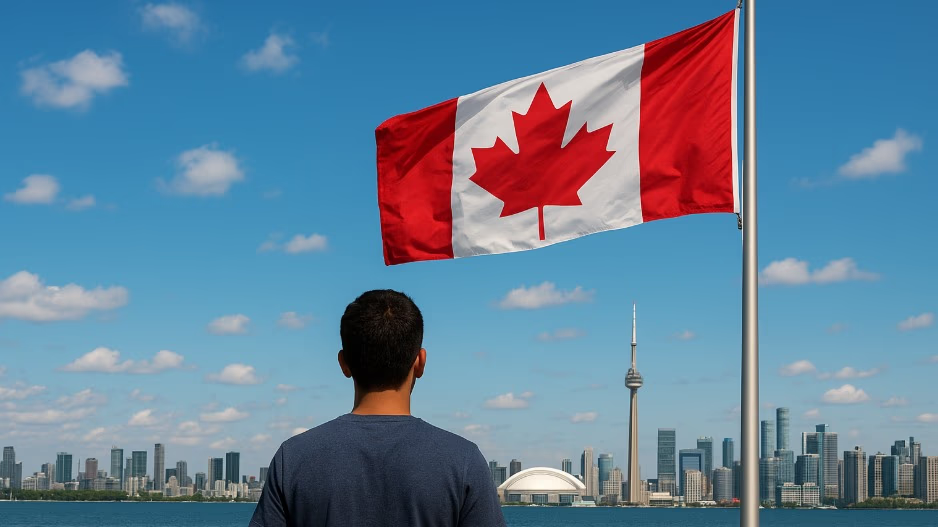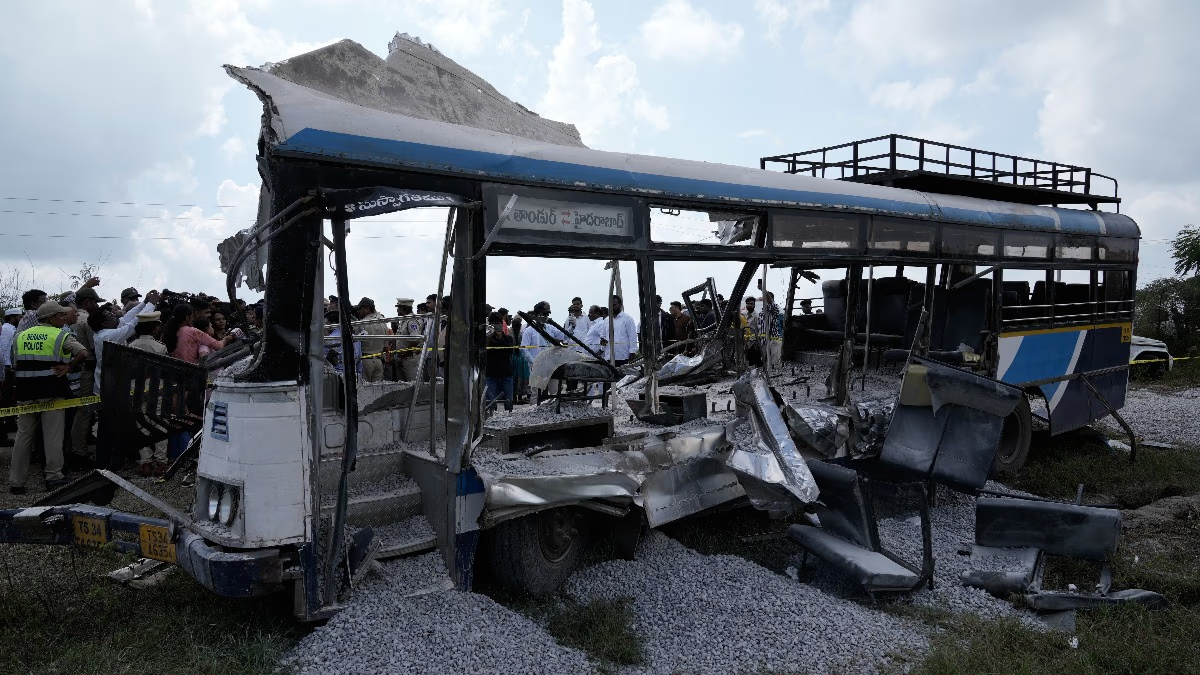A section of India has always been eager to settle abroad. Historically, the USA and UK have been the top choices for Indians, with many arriving for studies and work. However, as these nations tightened immigration, Indians shifted their focus to Canada.
Canada, needing a population boost, was attractive to Indians. In 2015, the Trudeau government simplified the immigration process with the Express Entry system, inviting high-skilled workers for permanent residency (PR), even without a job offer in Canada. Thus, Indians flocked to Canada, seeking opportunities.
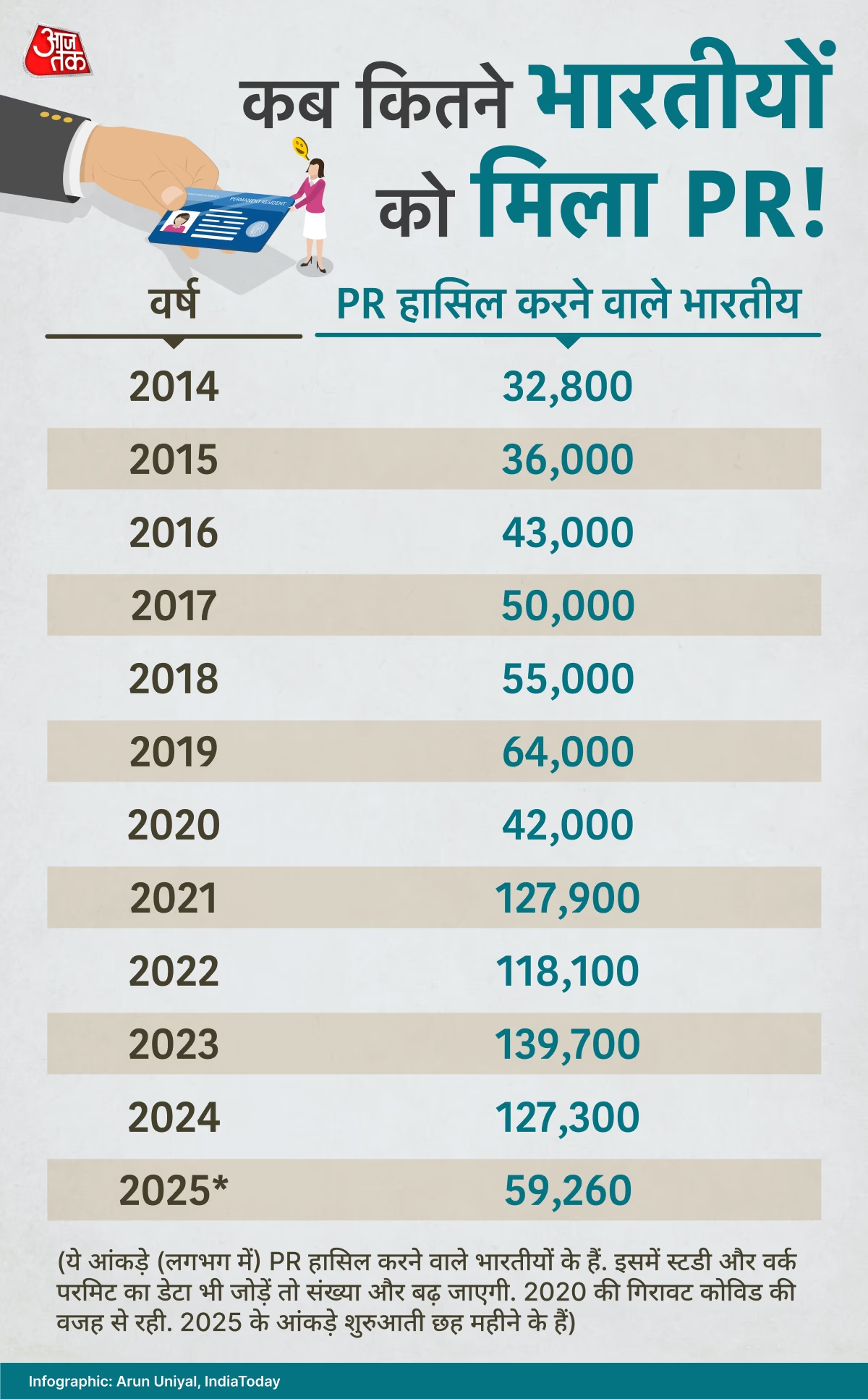
Source: aajtak
Upon receiving PR, one can enjoy all rights in Canada akin to a citizen, barring voting rights, which follow citizenship.
To obtain PR, Immigration, Refugees and Citizenship Canada (IRCC) assesses candidates based on age, education, language proficiency, spouse's education, and job offers in Canada through its Comprehensive Ranking System (CRS). A candidate’s CRS score must meet or exceed the IRCC's cutoff for PR applications.
How is CRS Calculated?
Ishminder, a manager at an immigration firm, illustrates this through an example.
Rajesh, an Indian, aspires for PR in Canada. At 29, with a Master’s degree and an IELTS band score of 9, he has three years of experience but no Canadian degree or job offer. Rajesh is single.
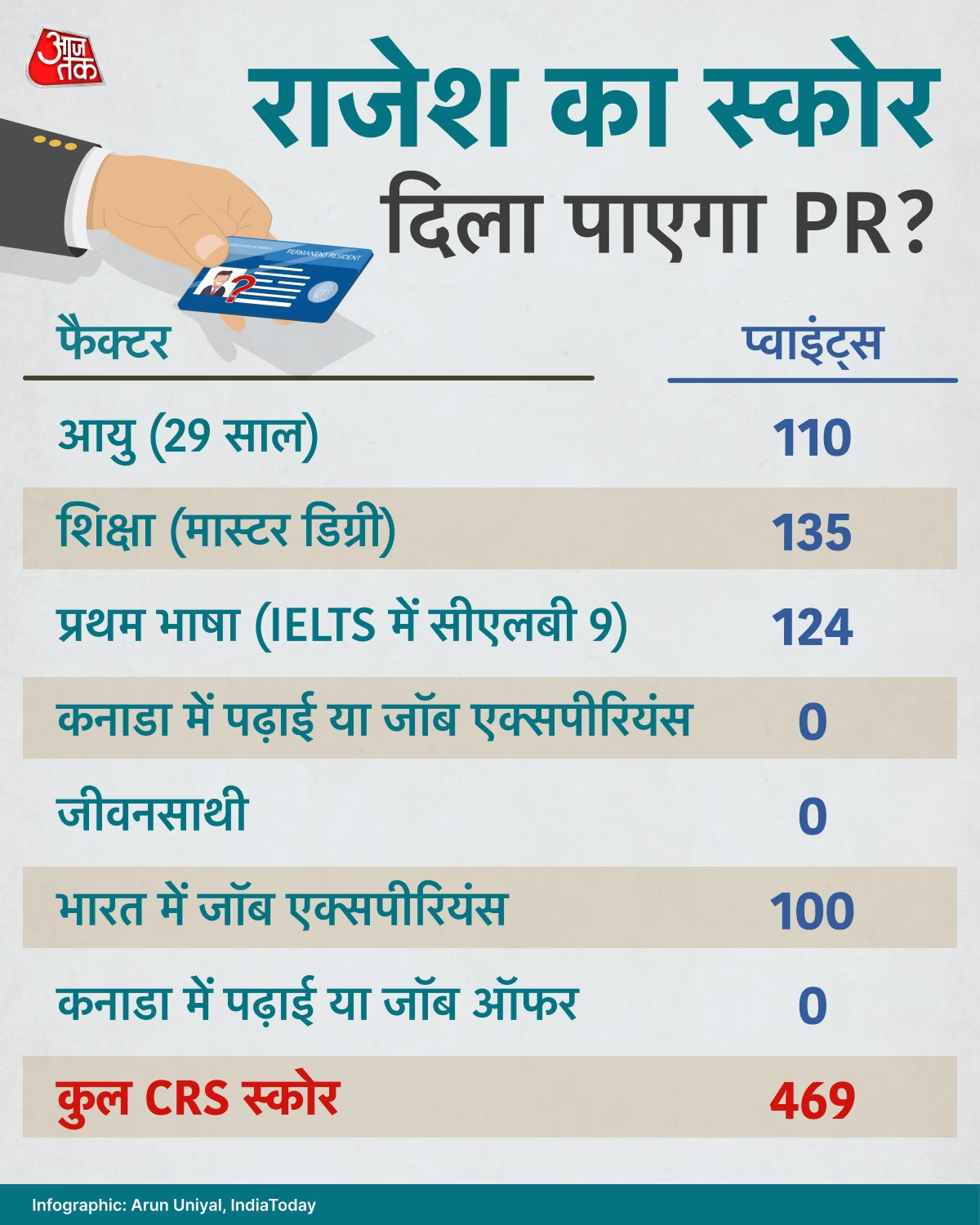
Source: aajtak
Rajesh’s CRS becomes 469. If the IRCC draw cutoff is 465, Rajesh receives an application invite for PR. If it’s 470, he won’t succeed. However, with future cutoffs potentially dipping below 470, Rajesh may get another opportunity.
With a simplified immigration process, the influx from abroad to Canada was such that PRs became harder to acquire. The IRCC raised the CRS scores substantially, prompting people to seek education in Canada to enhance their PR prospects.
This situation is illustrated in a case study.
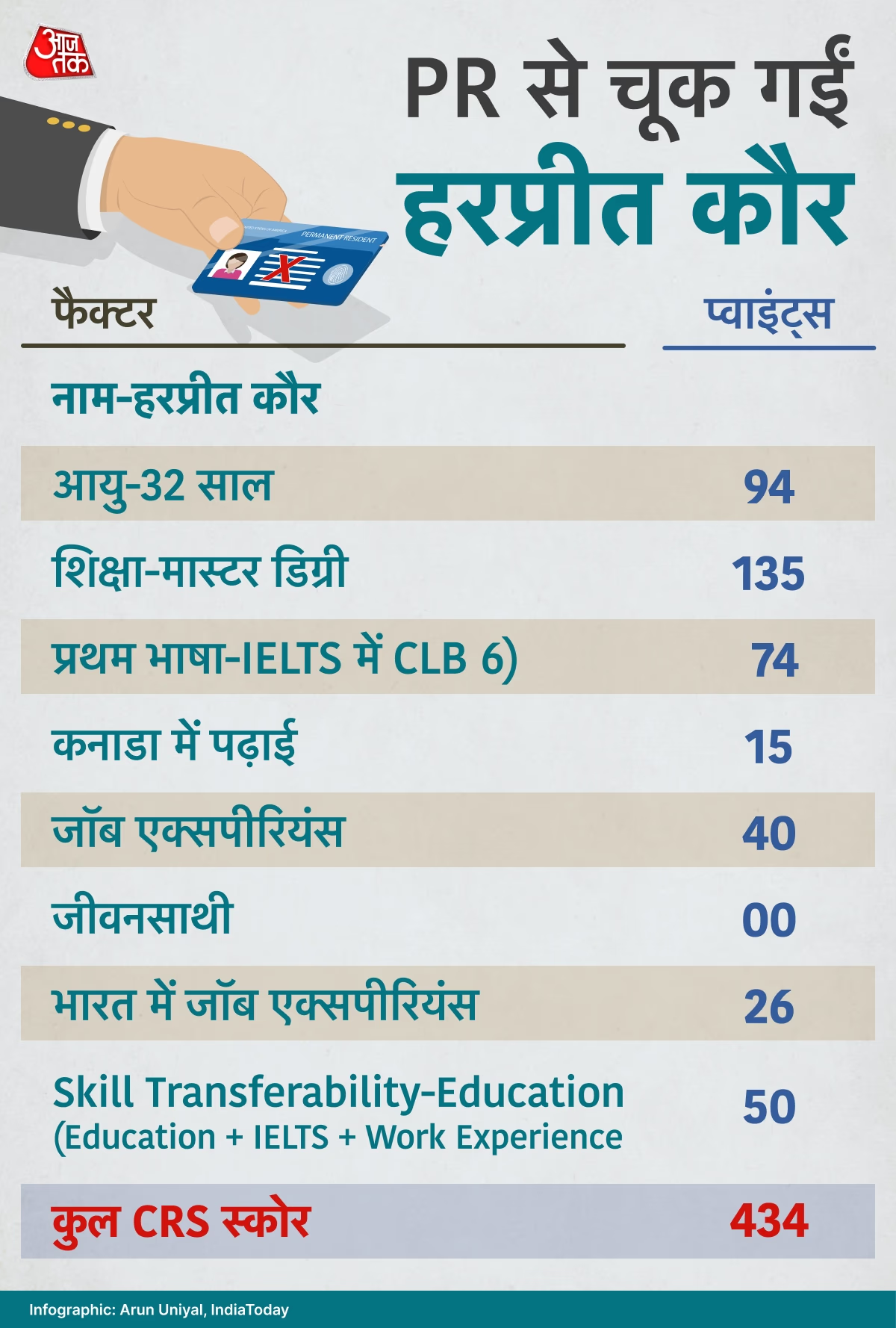
Source: aajtak
Harpreet Kaur from Punjab moved to Canada on September 2, 2019. She undertook two one-year courses between 2019 and 2021 and secured a three-year work permit from September 2021 to September 2024. Harpreet then pursued a high-skilled job from January 2022 to January 2023. Yet, her total CRS score was 434, and by 2025, the draw cutoff remained above 500.
Harpreet applied to extend her work permit set to expire in September 2024, but on December 17, 2024, the IRCC rejected her application, mandating leaving Canada or restoring her status within 90 days. On March 15, 2025, she applied for a visitor visa, which was also denied on August 12, 2025, as she had been in Canada for too long.
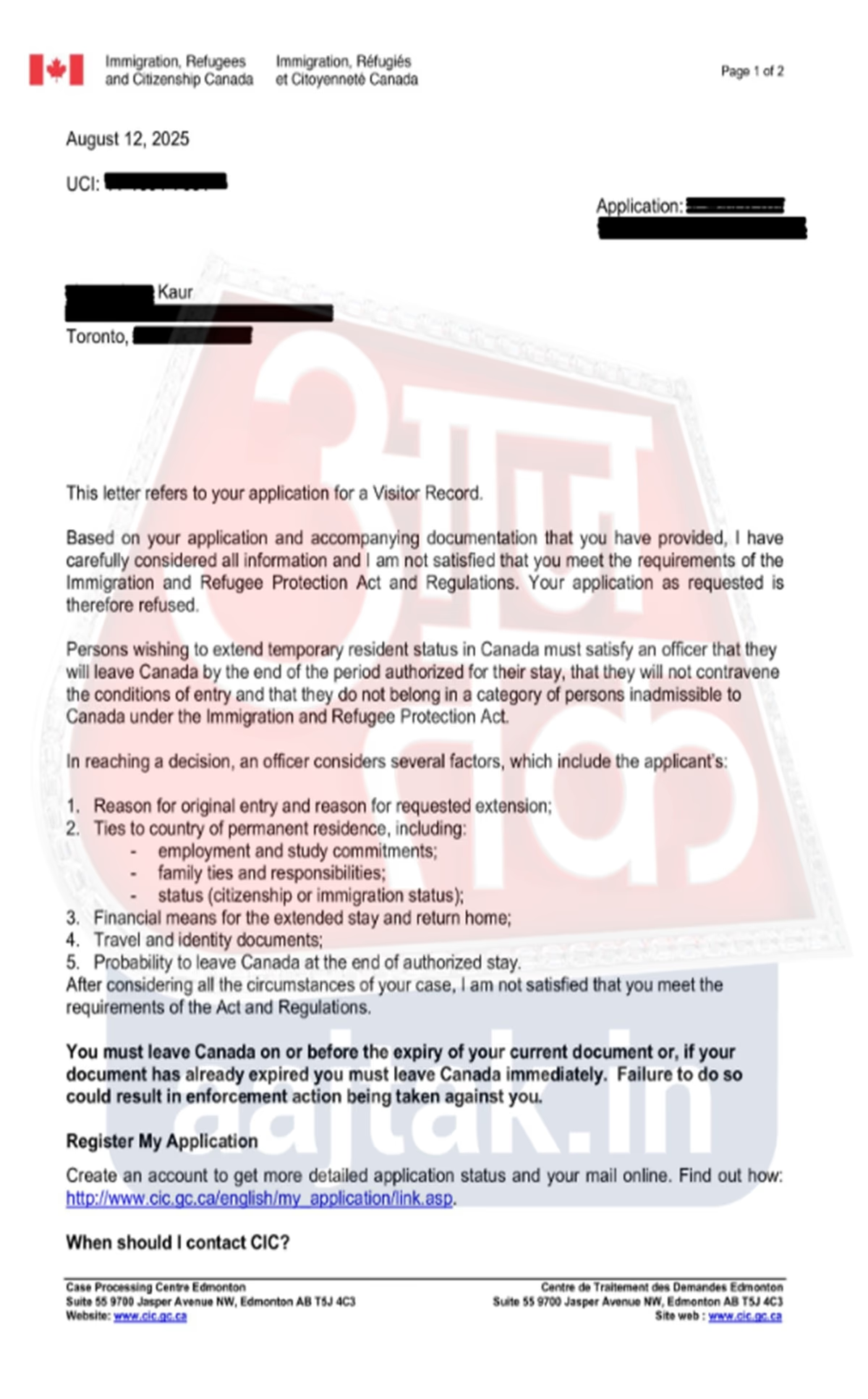
Source: aajtak
The IRCC warned, "You must exit Canada on or before your document's expiry, or face further action."
Rising CRS Scores: A Challenge
The government continues to increase CRS scores every two weeks, complicating matters for aspiring immigrants. In 2023, IRCC cutoffs ranged from 480 to 490. The criteria became more specific in June 2023, considering categories like medical professionals and French speakers, leading to some reductions by 2024. The cutoff ranged between 470–485 in 2024. By October 2025, the Canadian Experience Class cutoff, for those working on a permit hoping for PR, was 534. Achieving the requisite CRS score is pivotal for a smooth PR process.
Harpreet could have pursued better scoring through education and work permits, but scoring well in CRS continued to elude her. While her partner's CRS score might have supplemented hers, his qualifications and experience fell short.
Other Avenues...
According to immigration lawyer Junaid Ali Khan, "Low CRS scores are common, often due to poor English scores in IELTS and insufficient education, mostly limited to graduates. The real shift is in application rejections. Previously, extending work permits or obtaining visitor status was straightforward, facilitating score improvements over time. Now, applications face high rejection rates, often leading people to return to India."

Source: aajtak
Students like Harpreet can enhance their English proficiency in India, with some also learning French, which offers a lower-score pathway for PR. This year, several students received PR due to French skills. Within months, students can learn enough French to succeed in Express Entry.
Junaid also mentioned opportunities to gain occupation-specific experience in high-demand fields like healthcare, where candidates can quickly increase their CRS scores and receive PR invitations.
However, even these options may come short for some, particularly those struggling with English. Achieving a CRS score near 490 in healthcare, where demand is high, isn't easy without strong language skills.
Many students hesitant about their scores avoid returning home, choosing to claim asylum for refugee status. This phenomenon has prompted the Canadian government to introduce stricter rules under Bill C-2, countered by a proposed, more lenient C-12, yet to pass.
The Diminishing Numbers from India?
IRCC data shows an 80% rejection rate for Indian student permits in 2025, with tougher criteria making it increasingly challenging.
Junaid notes, "With tougher PR processes, Canadian applications have dropped sharply. Applications were once plentiful, with separate departments for study visas, now integrated due to diminished volume. Compared to 2024, there's over a 50% fall in applications, as students seek alternatives for easier PR paths."
Why is Canada Tightening Immigration?
Manager Ishminder Kaur explains, Canada invited people in large numbers without adequate infrastructure, putting strain on public transport, housing, jobs, and healthcare, causing unrest. Prime Minister Trudeau faced criticism for failing to plan immigration amidst rising oil prices and inflation, which exacerbated economic woes.
In 2022-23, a labor demand existed without job seekers, inflating wages. Over a year, conditions shifted amid multiple factors impacting Canada’s immigration stance.
Rising costs also challenged temporary residents, notably students, facing heightened fees and living expenses. Students previously easily covered costs with part-time work, but inflation and limited jobs have increased hardships.
Indian Populace in Canada Tripled Over 12 Years
Statistics reveal a surge in the Indian population over the recent decade, becoming the largest group securing PRs in Canada. PR applicants from China (31,815), Afghanistan (23,735), Nigeria (22,085), and the Philippines (22,070) follow. Between 2017 and 2021, Indian immigration spiked, partly due to the Trump administration's anti-immigration stance.
Post-COVID travel restrictions caused a significant decline in numbers in 2019, followed by record increases. PR acquisitions leapt by 198% after lifting restrictions in 2020, not accounting for those on study or work permits.
What Should Indian Students Do?
According to immigration lawyer Junaid Ali Khan,

Source: aajtak
Opportunities remain for Indians in Canada, though securing PR has become more challenging, not impossible. The right courses and a strong profile can ease the path to PR. Skills in healthcare, education, and French remain in high demand. Students applying for permits should choose programs aligned with Canada’s labor market needs. Prioritize CRS readiness — focus on English (IELTS/CELPIP/PTE), educational credentials, and work experience. These factors elevate your CRS score, paving the way to PR.
If these criteria are lacking, consider other countries instead.
